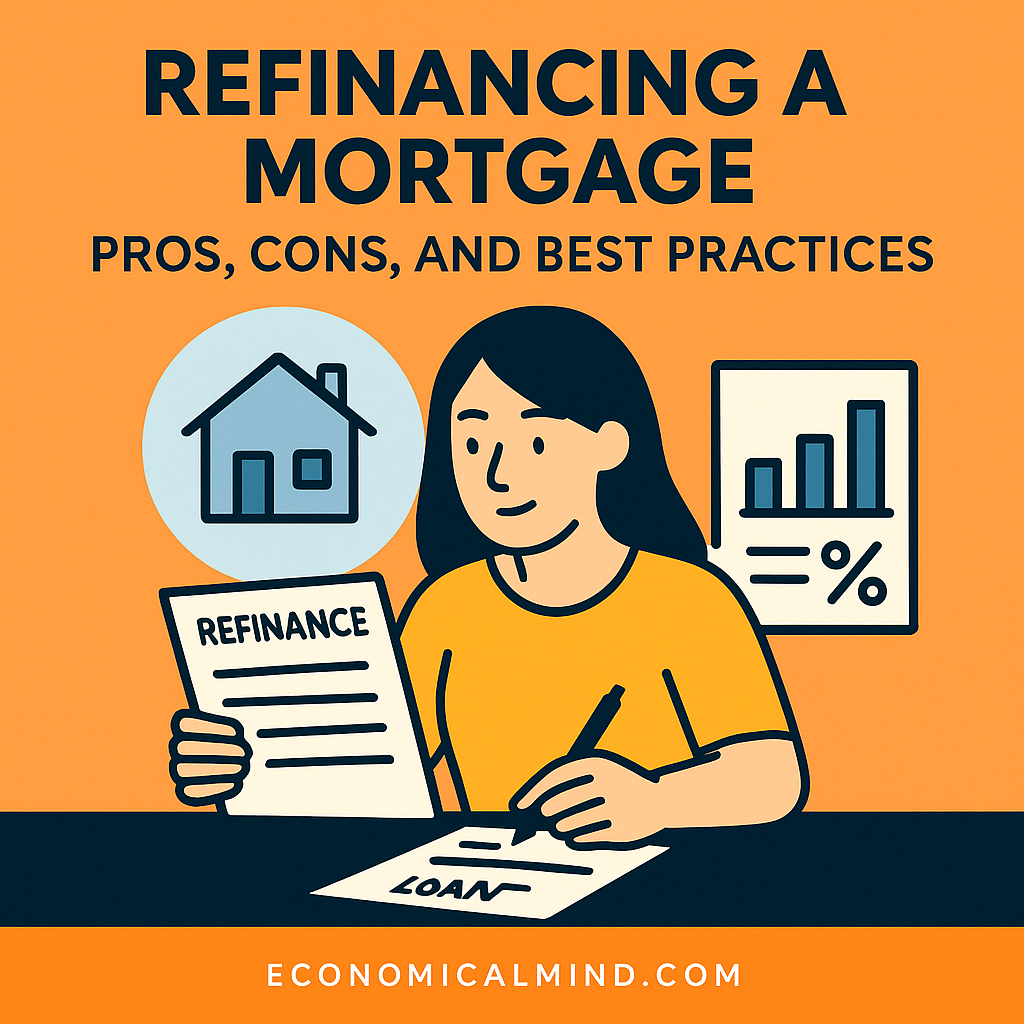
Refinancing your mortgage can lower monthly payments, shorten your loan term, or free up cash — but it’s not always the right move. Understanding how it works (and when to do it) helps you save money and avoid costly mistakes. Here’s what to know before you refinance.
What Is Mortgage Refinancing?
Refinancing means replacing your current mortgage with a new one — often with a better interest rate or different terms. The process is similar to applying for your first loan, including a credit check, income verification, and closing costs.
People refinance for reasons like lowering payments, paying off debt, or accessing home equity through a cash-out refinance.
Pros of Refinancing a Mortgage
1. Lower Interest Rate
Refinancing when rates drop can save thousands over the life of your loan.
Example: Even a 1% rate reduction can make a major difference on a 30-year mortgage.
2. Reduced Monthly Payments
Lower rates or longer terms can shrink your monthly bill, freeing up room in your budget.
Example: A refinance could reduce your payment by $200–$400 a month.
3. Shorter Loan Term
Switching from a 30-year to a 15-year mortgage helps you pay off your home faster and save on interest.
Example: You’ll pay more monthly, but own your home outright much sooner.
4. Access to Home Equity
A cash-out refinance lets you borrow against your home’s value for big expenses like renovations or debt consolidation.
Example: Refinancing $200,000 on a $300,000 home could give you $50,000 in cash for upgrades.
5. Switch from Adjustable to Fixed Rate
Moving from an adjustable-rate mortgage (ARM) to a fixed rate can bring stability and predictability.
Cons of Refinancing a Mortgage
1. Closing Costs
You’ll pay fees again — typically 2–5% of the loan amount.
Fix: Only refinance if your savings outweigh the costs.
2. Restarting the Loan Term
Refinancing can reset your 30-year clock, meaning more interest paid long-term.
Fix: Choose a shorter term if you’ve already paid several years into your mortgage.
3. Potential for Higher Total Costs
Even with lower monthly payments, stretching the term can increase your total interest over time.
Fix: Compare lifetime costs, not just monthly savings.
4. Risk of Losing Equity
A cash-out refinance increases your mortgage balance.
Fix: Only tap equity for strategic reasons like improving home value.
5. Qualification Challenges
If your credit or income situation changed, approval may be harder or your rate higher.
Fix: Improve your credit and debt-to-income ratio before applying.
Best Practices for Refinancing
1. Shop Around for the Best Rate
Get quotes from at least three lenders — even small differences in rates or fees can add up.
2. Know Your Break-Even Point
Calculate how long it will take for your monthly savings to cover closing costs.
Example: If refinancing costs $5,000 and you save $200 a month, your break-even point is about 25 months.
3. Review Your Credit Before Applying
A stronger score unlocks better terms. Check your report for errors in advance.
4. Avoid Taking on New Debt
Major purchases before refinancing can affect your credit or debt ratios.
5. Understand the Loan Type
Choose between rate-and-term or cash-out refinancing depending on your financial goals.
6. Lock Your Rate at the Right Time
Rates fluctuate daily — a rate lock protects your deal while you finalize paperwork.
7. Don’t Forget Taxes and Insurance
Your new lender may handle escrow differently. Review how these costs fit into your payment.
Key Takeaway
Refinancing can be a powerful financial tool — when done for the right reasons. The goal isn’t just a lower rate; it’s improving your long-term financial position.
